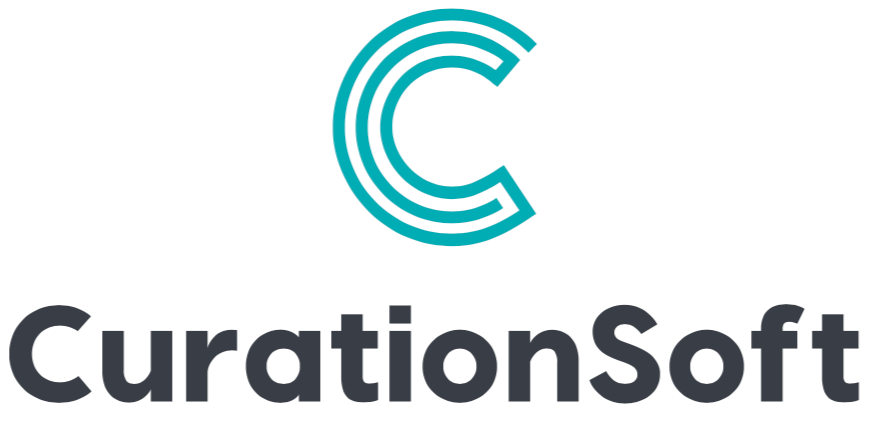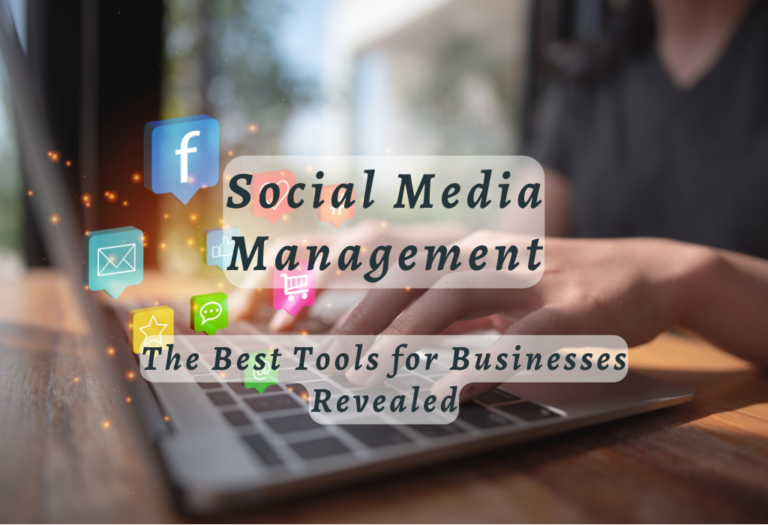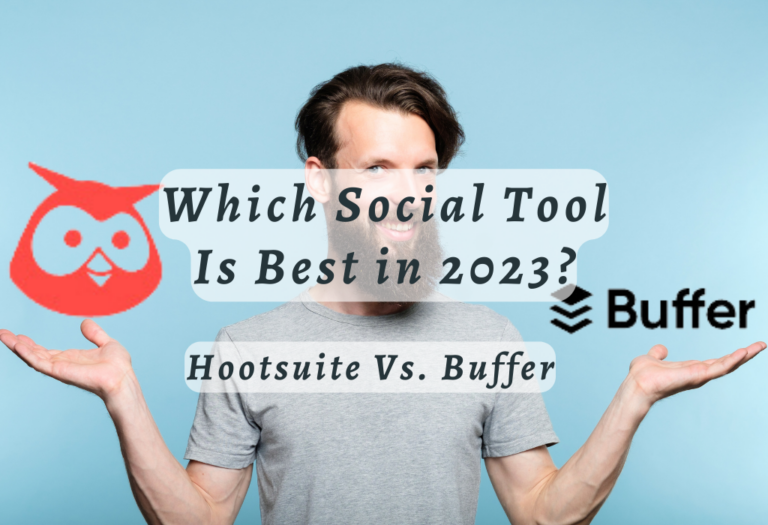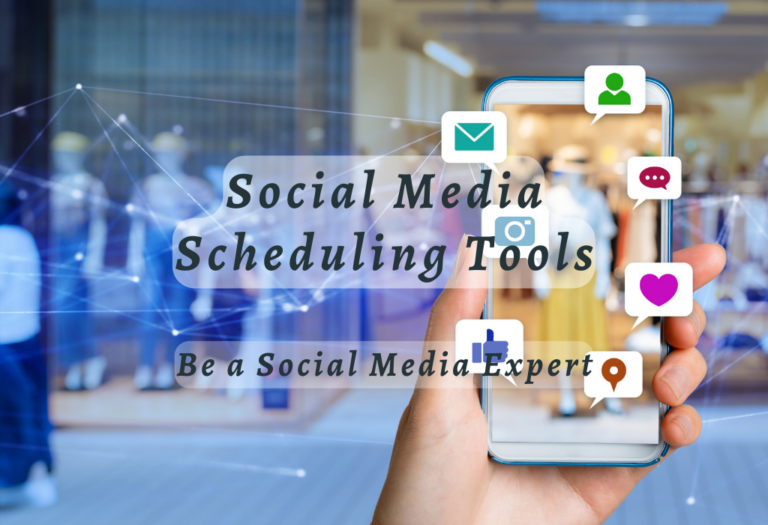The Best Social Media Automation Tools For 2023
Social media automation has become an increasingly popular tool for marketers looking to maximize their time and efforts on social platforms. Despite its significance and multiple benefits, most people need to learn what social media automation is and how it can benefit their marketing strategy.
This blog post will discuss the basics of social media automation, including its benefits and challenges and the different tools you can use. We’ll also cover best practices for using these automated tools effectively so that you get the most out of them. Finally, we’ll look at ways to measure success when implementing a social media automation strategy into your content marketing plan.
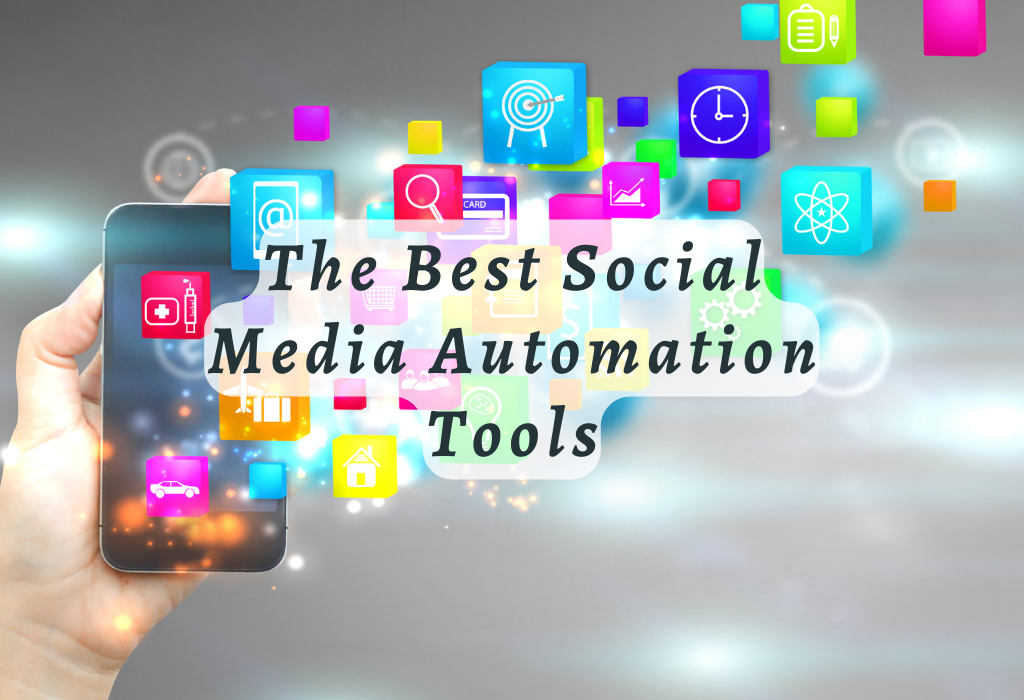
What is Social Media Automation?
Social media automation is the process of scheduling posts, tweets, and other content to be published on social media platforms at predetermined times. It saves businesses time by automating their social media presence without manually posting daily. Automation also helps ensure that your content reaches the right audience at the right time.
Benefits of Social Media Automation
Social media automation is an invaluable tool for marketers. It allows them to save time and resources while still engaging with their customers regularly. Automation can streamline processes, increase efficiency, and improve customer engagement.
1. Time Savings
Social media automation helps marketers save time by automating mundane tasks such as scheduling posts, responding to comments, or monitoring conversations. It frees up more time for other activities such as creating content or analyzing data. Additionally, automated tools get used to creating campaigns tailored specifically to each user’s interests and needs.
2. Improved Customer Engagement
Automated social media tools allow businesses to engage with their customers in real time without manually responding to every single comment or post. By using automated messages and notifications, companies can ensure that they are providing timely responses, leading to better customer satisfaction overall.
3. Cost Savings
Automation also helps reduce costs associated with manual labour by eliminating the need for additional staff members who would otherwise be required for specific tasks such as scheduling posts or responding to comments on social media platforms. Additionally, it eliminates the need for expensive software solutions, which could cost thousands of dollars per year in licensing fees alone.
The benefits of social media automation are clear – it helps marketers save time, reach more people, and better manage their campaigns. Now let’s look at the challenges associated with this technology.
Key Takeaway: Social media automation is a valuable tool for marketers, allowing them to save time and resources while still engaging customers. Best practices include maintaining control over the content, preventing spammy behavior, and measuring success with metrics such as engagement rate, reach, impressions and conversions.
What are the critical metrics in social media automation?
The key metric when measuring success with any type of automation tool are:
All these metrics combined would indicate if your campaign was successful or not.
What is the price of social media automation?
The cost of social media automation can range from being completely free to costing thousands of dollars every month. Your needs will determine the price.
To assess your automation needs, you must provide answers to a few questions:
Once you have the answers, the last price consideration is to take into account the social media platforms you utilize.
While some automation programs (often the more costly ones) support numerous platforms, others are only compatible with specific networks.
After going through all that, let’s be clear: Not all social media chores should or can be automated.
It may seem apparent, but you should refrain from using any automated strategy that gives the impression that your brand is careless, spammy, or false.
The secret is to employ intelligent social media automation to benefit your reputation and online connections rather than harm them.
Challenges of Social Media Automation
Social media automation is a powerful tool for marketers, but it comes with its own challenges.
1. Lack of Personalization
One of the most common issues associated with automated social media posts is that they need more personalization and connection to the target audience. Automated messages may be tailored to something other than individual users’ specific interests or needs, making them less likely to engage with your content.
2. Difficulty in tracking Results
Another challenge posed by automated social media postings is tracking results. It can be difficult to accurately measure how successful a computerized post has been in engagement or conversions without manual input from you or your team members. It makes it harder to determine whether specific strategies are working as intended and adjust if needed.
3. Spam behaviour
Thirdly, there’s also a risk that over-automation could lead to spammy behaviour on social networks like Twitter and Facebook, damaging your brand reputation in the long run. As such, you must ensure that any automated messages are relevant and timely to avoid overwhelming followers with too many updates or bombarding them with irrelevant content.
4. Cost
One more issue associated with using social media automation tools is cost. Some platforms require monthly subscription fees while others charge per message sent out via their platform. Therefore, it is essential to do your research before investing in an automation solution for your business to ensure that you are getting the best value for money.
Social media automation can be a powerful tool for marketers, but it is essential to consider the potential challenges before investing in an automated solution. Next, we will discuss the different types of social media automation tools available.
Key Takeaways: Don’t let automation take over your social media. Make sure you personalize your posts and track results to get the most out of them.
How to Automate Social Media Posts
Social media automation helps save time and energy when managing your social media accounts. Automation tools allow you to schedule posts in advance, making it easier to stay consistent with your content strategy. You can also collaborate with team members on post-creation and distribution, further streamlining the process. Here are a few steps to start social media automation and rock with the results:
1. Selecting the Right Tool
When choosing an automation tool, consider the most important platforms for your business. Many agencies offer support for multiple networks like Facebook, Twitter, Instagram, LinkedIn and YouTube. Some may include additional features such as analytics or customer relationship management (CRM) integration.
2. Content Creation
Once you’ve selected a tool that meets your needs, it’s time to start creating content. When crafting posts for automated sharing, ensure they align with your brand voice and messaging guidelines. Consider adding visuals or other engaging elements like polls or quizzes to keep followers engaged over time. Also, use hashtags strategically so that more people will see each post. Stay moderate; only a few hashtags can look spammy.
3. Select Frequency
Finally, think about how often you want automated posts shared throughout the day or week, depending on what works best for your audience and goals. It will help ensure consistency while only overwhelming followers with a bit of content at a time. Keep in mind that some platforms have restrictions on how frequently users post from third-party apps; check out their terms of service before scheduling away.
By taking advantage of social media automation tools, marketers can save valuable time while consistently delivering quality content across multiple channels – all without breaking a sweat.
Types of Social Media Automation Tools
Social media automation tools are an excellent way for marketers to save time and increase their efficiency. These tools allow users to automate various tasks such as scheduling posts, tracking analytics, and engaging with followers. Following are some remarkable tools to create a buzz.
1. Scheduling Tools
Scheduling tools are used to plan out social media content in advance. It allows marketers to set up campaigns ahead of time so that they can focus on other aspects of their job without worrying about missing deadlines or forgetting essential posts. Popular scheduling tools include Hoot suite, Buffer, and Sprout Social.
2. Analytics Tools
Analytics tools provide insight into how well your social media campaigns are performing by tracking metrics such as reach, engagement rate, impressions, clicks, and more. With these insights, you can make informed decisions about what type of content works best for your audience and which strategies need improvement. Popular analytics tools include Google Analytics and Sprinkler Insights.
3. Engagement Tools
Engagement tools help you interact with your followers in real-time by monitoring conversations across multiple platforms (e.g., Twitter). It helps ensure no comment or question goes unanswered while also allowing you to respond when needed most—which is especially useful during crisis management or customer service inquiries. Popular engagement tools include Mention and Agora pulse’s Social Inbox feature.
4. Content Curation Tools
Content curation is finding relevant content from around the web related to a specific topic or industry and then sharing it with your audience through social media channels like Facebook or Twitter. Content curation helps keep followers engaged while providing valuable information from trusted sources outside your brand’s website/blogging platform(s). Popular content curation tool options include Feedly and Scoopit.
Many types of social media automation tools are available, each with unique features and benefits. In the next section, we’ll explore best practices for using these tools to get the most out of your content marketing and SEO efforts.
Key Takeaway: Social media automation tools are a great way to save time and increase efficiency. Popular options include scheduling, analytics, engagement, and content curation tools such as Hootsuite, Buffer, Google Analytics, Mention and Feedly.
Popular Social Media Automation Tools
Social media automation tools can help marketers save time and optimize their social interactions.
1. Hub Spot
HubSpot’s social media tool makes it easy to share content from marketing campaigns across all platforms and manually publish content directly to LinkedIn, Facebook, Instagram, or Twitter. It also suggests the best times to post and helps develop a nuanced strategy.
2. Buffer
This tool was designed with collaboration in mind, allowing teams to draft and coordinate brilliant campaigns. It will enable users to assign conversations and automate tasks like tagging posts or setting them. Saved replies are available for quickly responding to common questions. Reporting features give recommendations on how reach, engagement, and sales can be grown.
3. Hootsuite
This fantastic tool offers regular scheduling features plus content curation tools that include a library of pre-approved posts for quick selection by team members scheduling content ideas. It saves time while ensuring quality control is maintained over what is posted online about your brand or company identity.
These automated tools provide an efficient way of managing multiple accounts at once without sacrificing the quality of service or response times when engaging with customers on social media channels such as Twitter, Facebook, Instagram etc. Automating specific processes, such as scheduling posts ahead of time, will free up resources so they can focus more on customer interaction instead of mundane administrative tasks associated with running a successful social media presence online today.
Best Practices for Using Social Media Automation
Regarding social media automation, there are a few best practices that marketers should keep in mind. First and foremost, setting goals for your automated campaigns is essential. It will help you measure the success of your efforts and determine if they’re meeting their objectives.
1. Creating a content calendar
This practice is also essential when using social media automation tools. A content calendar can help you plan out what types of posts you want to share on each platform and when those posts get shared. It also helps ensure that your messages are consistent across platforms and channels.
2. Creating Relevant and Engaging Content
It’s also essential to ensure that your messages through social media automation tools are relevant and engaging for your target audience. Automated posts should include visuals or multimedia elements whenever possible to capture people’s attention quickly and effectively. Additionally, try including calls-to-action (CTAs) in some of your automated posts so users know how they can take action after reading them.
2. Considering Analytics
Finally, remember analytics. Tracking metrics such as engagement rates, impressions, clicks and conversions will give you an idea of how successful your automated campaigns have been over time so that you can adjust them accordingly if needed.
By following best practices for social media automation, you can maximize the effectiveness of your efforts and ensure that your content reaches its intended audience. Now let’s explore how to measure success with this powerful tool.
Key Takeaways: Don’t let your social media automation efforts get lost in the shuffle. Set goals, create a content calendar, use visuals & CTAs, and track analytics to make sure you’re getting the most out of it.
How to Measure Success with Social Media Automation
Measuring success with social media automation is essential for marketers. By tracking the right metrics, you can determine if your efforts are paying off and make adjustments as needed.
1. Engagement Rate
The engagement rate measures how many people interacted with your post or ad. It’s calculated by dividing the number of interactions (likes, comments, shares) by the total reach of a post or ad. The higher the engagement rate of your posts, the more successful it was in getting people to interact with them.
2. Reach
Reach means how many people saw your post or ad on their newsfeeds. This metric is important because even if many people engage with your content but have yet to see it, there’s no point in creating that content in the first place. You should aim for posts and ads with high reach numbers so that more people see them and potentially engage with them.
3. Click-Through Rate (CTR)
The click-through rate (CTR) measures how many clicks an advertisement received compared to its total impressions—the number of times an ad was seen on someone’s screen—or views from organic search results like Google Search Console data reports. A higher CTR indicates that users were interested enough in what they saw to click through and learn more about what you had to offer them.
4. Cost Per Click (CPC)
Cost per click (CPC) is another crucial metric when measuring success using social media automation tools. It will help you understand how much money each user cost when they clicked on your advertisement link or website URL from within a social platform such as Facebook Ads Manager or Twitter Ads Manager. Knowing this information allows you to adjust bids accordingly to spend your time effectively while reaching potential customers interested in buying from you online.
5. Conversion Rate
The conversion rate measures how effectively your campaigns turn viewers into buyers or leads—essentially converting those who view something into taking action after viewing it, such as signing up for a newsletter list, downloading an ebook, etc. To calculate this metric, divide the number of conversions by total visitors/impressions multiplied by 100%. The higher this percentage is, the better your campaign did at convincing viewers to take action after seeing it.
6. Time Spent Viewing Content
Measuring success with social media automation requires patience, dedication and data-driven insights. With the right strategies, you can achieve ROI and make sure that your efforts are paying off. Now let’s take a look at this article.
Key Takeaway: Measuring success with social media automation requires tracking metrics such as engagement rate, reach, CTR, CPC and conversion rate. Additionally, time spent viewing content gets monitored to determine if viewers are taking action after seeing your posts or ads.
All-in-One Summary
Automation can help marketers save time, create more consistent content, and target specific audiences with greater accuracy. Many types of automation tools are available, including scheduling, analytics, and AI-driven bots.
When using social media automation, it’s essential to keep in mind best practices, such as creating quality content that resonates with your audience. Moreover, testing different strategies; understanding the rules of each platform; monitoring results regularly; and being mindful of how much you automate are some other points to consider. Measuring success should be done by tracking key metrics such as engagement rate, follower growth rate, website traffic from social sources, conversions from social sources etc., which will indicate whether or not your efforts are paying off.
FAQs concerning Social Media Automation
Conclusion
It gets used to automate repetitive tasks such as scheduling posts or responding to comments, freeing up more time for other marketing activities. While there are challenges associated with using social media automation tools, these can be overcome by following best practices and carefully measuring success. By leveraging the right tools and strategies, marketers can use social media automation to maximize their efforts and get the most out of their campaigns.
Are you finding a way to automate your content marketing and SEO strategies? Look no further than curationsoft! Our powerful tools allow you to quickly find, organize, optimize, and share high-quality content from social media sources relevant to your target audience. With our platform, you save time on research while increasing the reach of your brand’s message with fewer resources. Get started today – try our automated solutions now and get more leads faster!
